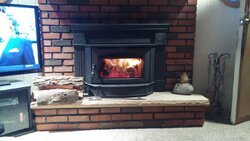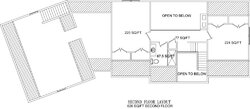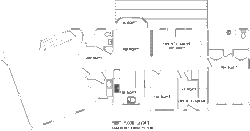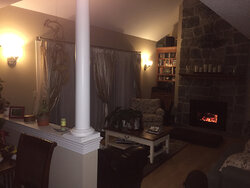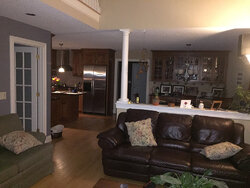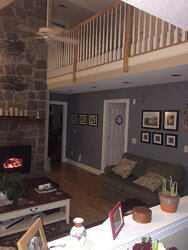Currently we have a Jotul C550 Rockland. It can handle the heating when the temperatures are above 30* outside. When temps get below that I really have to push it hard to raise the temps a few degrees. So we went an looked at a couple of inserts over the weekend that will stick out of the fireplace instead of a flush mount. Wife was against anything that was not flush when we bought the Jotul.
We looked at a Hearthstone clydesdale got information on an Enviro Boston and PE Alderlea T5. They do not have the T5 or Boston in the showroom. Was all set on the Boston until I read that it only blows from the right side post #10 https://www.hearth.com/talk/threads/installed-yesterday-enviro-boston-1700.113193/. My thinking is that these stick out so we will get some radiant heat from the face and convection heat from the fans. Not sure how much radiant heat we will get though. PE has the same size firebox as the Jotul. Boston and Clydesdale have a bigger firebox.
Area that this heats is an open floor plan. Main area is 14' wide by 19' long with 17' cathedral ceiling and balcony. Then a 28' wide by 12' long with 8' ceiling area. Upstairs there is 2 bedrooms (unoccupied) at each end of the balcony with the doors only cracked open and a full bath with the door opened half way. Main area outside wall is mostly glass. I have added r38 insulation up in the attic area and that has helped some. My main concern is how hard I have to push the Jotul. Beautiful insert just to small. Aesthetics are important and we like to look of cast over steel on the fronts.
I also would have to extend the hearth in the front. Currently we have a 20" bluestone slab and would need to add around 4 more inches. There is a piece of hardwood floor that I plan on removing and glue the 4" piece to the 20" piece. Would this be acceptable or do I have to remove the entire piece?
We looked at a Hearthstone clydesdale got information on an Enviro Boston and PE Alderlea T5. They do not have the T5 or Boston in the showroom. Was all set on the Boston until I read that it only blows from the right side post #10 https://www.hearth.com/talk/threads/installed-yesterday-enviro-boston-1700.113193/. My thinking is that these stick out so we will get some radiant heat from the face and convection heat from the fans. Not sure how much radiant heat we will get though. PE has the same size firebox as the Jotul. Boston and Clydesdale have a bigger firebox.
Area that this heats is an open floor plan. Main area is 14' wide by 19' long with 17' cathedral ceiling and balcony. Then a 28' wide by 12' long with 8' ceiling area. Upstairs there is 2 bedrooms (unoccupied) at each end of the balcony with the doors only cracked open and a full bath with the door opened half way. Main area outside wall is mostly glass. I have added r38 insulation up in the attic area and that has helped some. My main concern is how hard I have to push the Jotul. Beautiful insert just to small. Aesthetics are important and we like to look of cast over steel on the fronts.
I also would have to extend the hearth in the front. Currently we have a 20" bluestone slab and would need to add around 4 more inches. There is a piece of hardwood floor that I plan on removing and glue the 4" piece to the 20" piece. Would this be acceptable or do I have to remove the entire piece?


